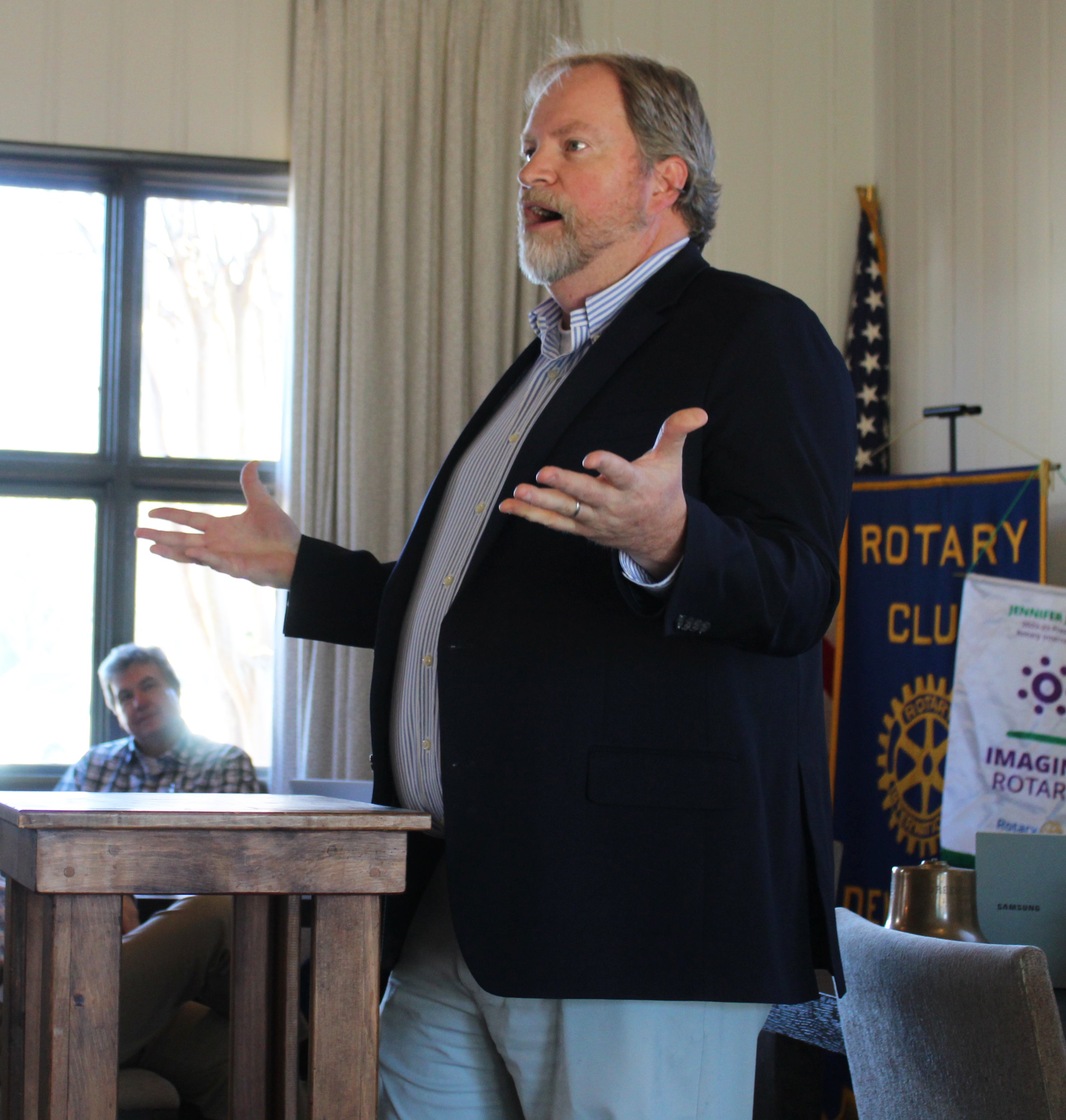Published 4:30 pm Tuesday, January 10, 2023
|
Getting your Trinity Audio player ready...
|

Demopolis Superintendent Tony Willis was the speaker for the January 4 Rotary Club Meeting. Willis spoke on DCS student growth over the last semester.
The speaker for the first Rotary Club meeting of 2023 was Demopolis Superintendent Tony Willis. Willis presented a report on the school system’s first semester and what improvements he and his staff are aiming for in the second semester.
Willis said that at the end of every year, the school system uses different metrics to determine growth in individual students and the student population as a whole. Westside Elementary primarily uses DIBELS (Dynamic Indicators of Basic Early Literacy Skills) that measures how well students are reading. Willis said the scores in K one and two this year were the highest they’ve ever been.
“Kudos to those for working hard, making sure that we’re on track. That’s the foundation that sets us up for higher achievement later on,” said Willis.
Willis said that U.S. Jones Elementary School and Demopolis Middle School make up the bulk of how the school system is graded. The school system gives a once a year test called the ACAP which is a standardized test that ranks a school with where you currently are in student growth. Willis said that in grades three through eight, the student growth was very high.
“Coming out of the pandemic, you hear everybody talking about the decline in our school systems and how everybody’s going the wrong way. When I first got it I was not super impressed because we had only grown just a little bit compared to some of the previous years,” said Willis. “But then when I started looking at how other school systems were going down and we’re one of the few that’s actually going up, that helps you a lot in terms of ranking and putting things into perspective.”
Willis said that heavy emphasis was placed on third grade because of the Literacy Act requiring children to read at a certain level by third grade. The Demopolis district was ranked 21st out of the 137 districts in Alabama.
“I’m not someone who usually feels great about a ranking like 21. But when I started looking, the school districts above us had either low poverty or low diversity,” said Willis. “If you stop and think about the schools that were over 50 percent poverty and over 50 percent diversity, we were number one in the state. So that was a huge bragging point for us. We felt good about that.”
At the high school level, Willis said it becomes a much more gray area of the state grades the school. He said there is no rubric for many of the classes high school students take, so grading for high schools is based on the junior class and their performance on the ACT they take in March.
“When the state put out their state report cards for the first time in a few years, I was pleased that as a district we grew five points. The last time the state did report cards our district received an 80 and we moved up to an 85,” said Willis. “It’s the highest we’ve ever been. Demopolis has always been an 80 or an 81. So when you see the district move up into the mid 80s, we’ve got a goal now. If we can jump up to the mid 80s then we need to start looking into how do we close the gap to be an ‘A’.”
Willis also touched on how well Demopolis did nationwide in reading and math growth. A study by the University of Stanford in California and Harvard University in Massachusetts determined from 3,700 schools across the U.S. how well schools did at retaining, growing, and losing ground in education amongst K-12 districts.
Demopolis was among the top 10 schools in the country to show a growth in math amongst all its students. DCS ranked 10th in the nation for growth in math, in reading the system was ranked 89th. While 89th may not sound great at first, 89th out of 3,700 school districts is the top 2.4 percent.
DCS also had the highest (#1 in the nation) growth among African American students of any of the 3,700 schools in the study. African American students showed more growth in math and reading than any other school district in the nation, and were ranked fourth reading.
“Our minority students’ math growth was number one in the nation and on a graph like this, it puts them in perspective,” said Willis. “Those are things we’re really proud of because they do not happen by luck or chance. We’ve tried to be very smart with the way we’ve invested in our students.”

